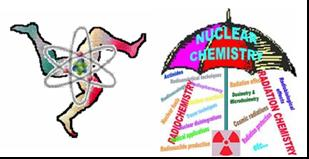Speaker
Dr
Marcia Pires de Campos
(IPEN)
Description
Phosphogypsum is a waste of the wet-acid process for producing phosphoric acid from phosphate rock. For every ton of phosphoric acid obtained, from the reaction of phosphate rock with sulfuric acid, about four tons of phosphogypsum are produced. Large quantities of phosphogypsum have been produced worldwide. In 2006, annual production was estimated to be about 170 million tons. Brazilian annual production of phosphogypsum reaches 5.5 million tons. In Brazil, the major phosphgypsyum producers are Ultrafertil, located in Cubatão, State of São Paulo and Fosfertil, in Uberaba, State of Minas Gerais.
Brazil, such as other countries that produce phosphate fertilizer, tries to find solutions for the safe applications of phosphogypsum, in order to minimize the impact caused by its disposal. Most of worldwide phosphogypsum is stock piled, posing environmental concerns. The monitoring of air and groundwater pollution, radon exhalation rate and direct exposure to gamma radiation for workers should be considered.
The aim of this study is to evaluate the natural radionuclides content and the radon exhalation rate from phosphogypsum piles from Ultrafertil and Fosfertil fertilizer industries. Samples of this material were analyzed by high resolution gamma spectrometry for their 226Ra, 228Ra, 210Pb and 40K activity concentration. Radon exhalation rate had been measured by the charcoal canister method. A theoretical model for radon exhalation calculation, suggest by UNSCEAR, was applied in order to confirm the experimental results.
The activity concentrations results are in agreement with literature values. The average radon exhalation rates and standard deviations from Ultrafertil and Fosfertil phosphogysum piles were 0.16 ± 0.07 Bq m-2 s-1 and 0.08 ± 0.02 Bq m-2 s-1, respectively.
Primary author
Mr
Marcelo Bessa Nisti
(IPEN)
Co-authors
Dr
Barbara Paci Mazzilli
(IPEN)
Dr
Marcia Pires de Campos
(IPEN)




